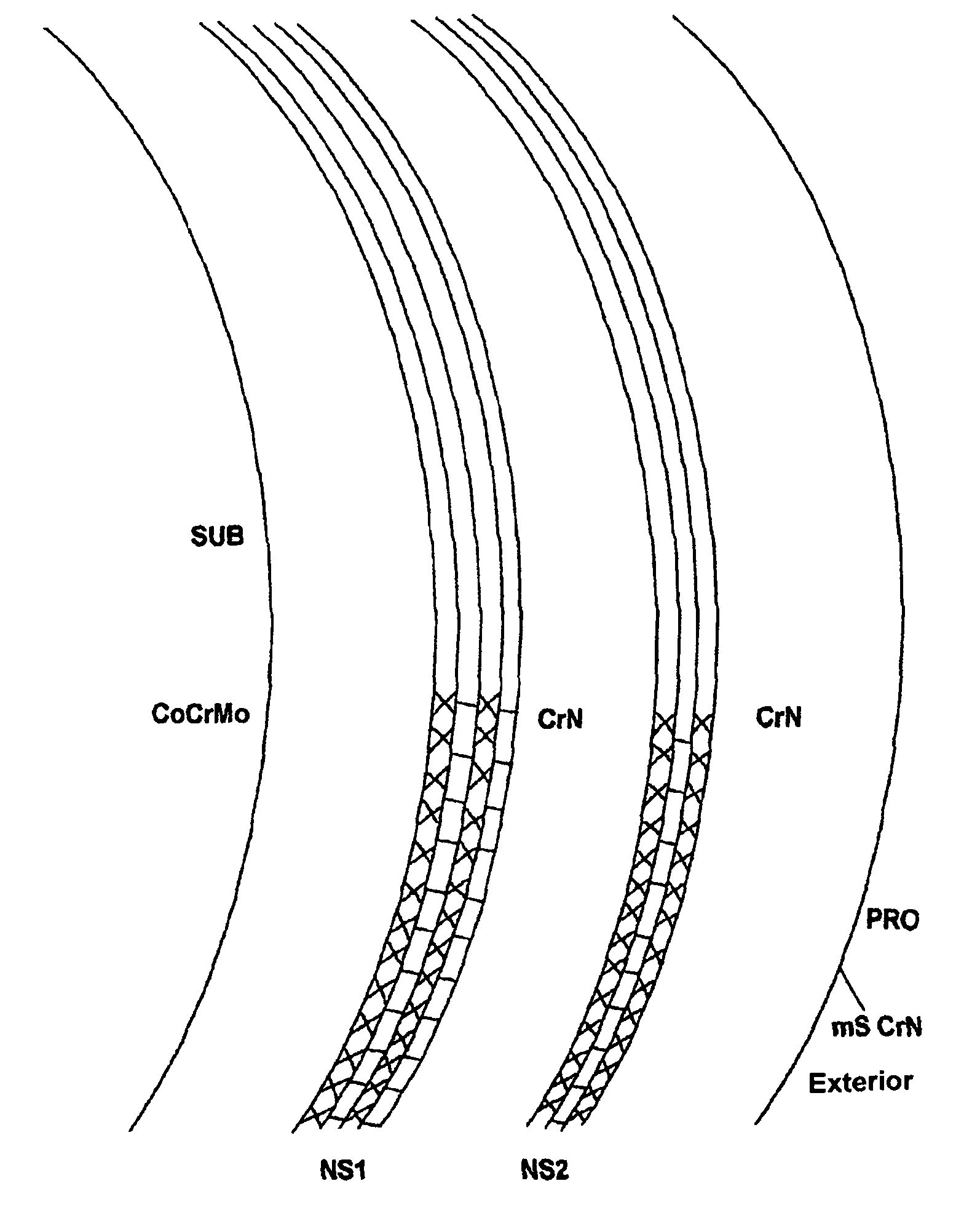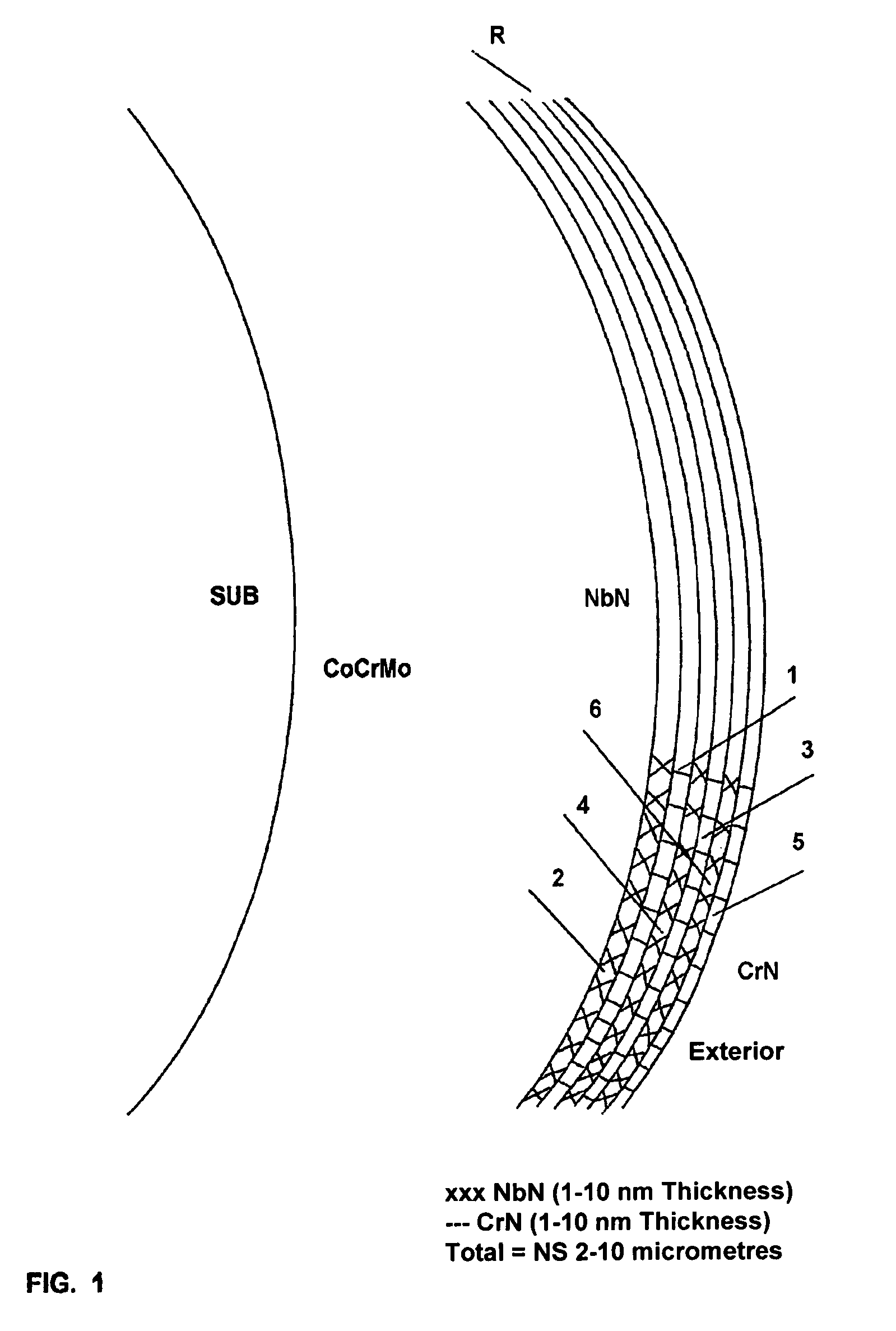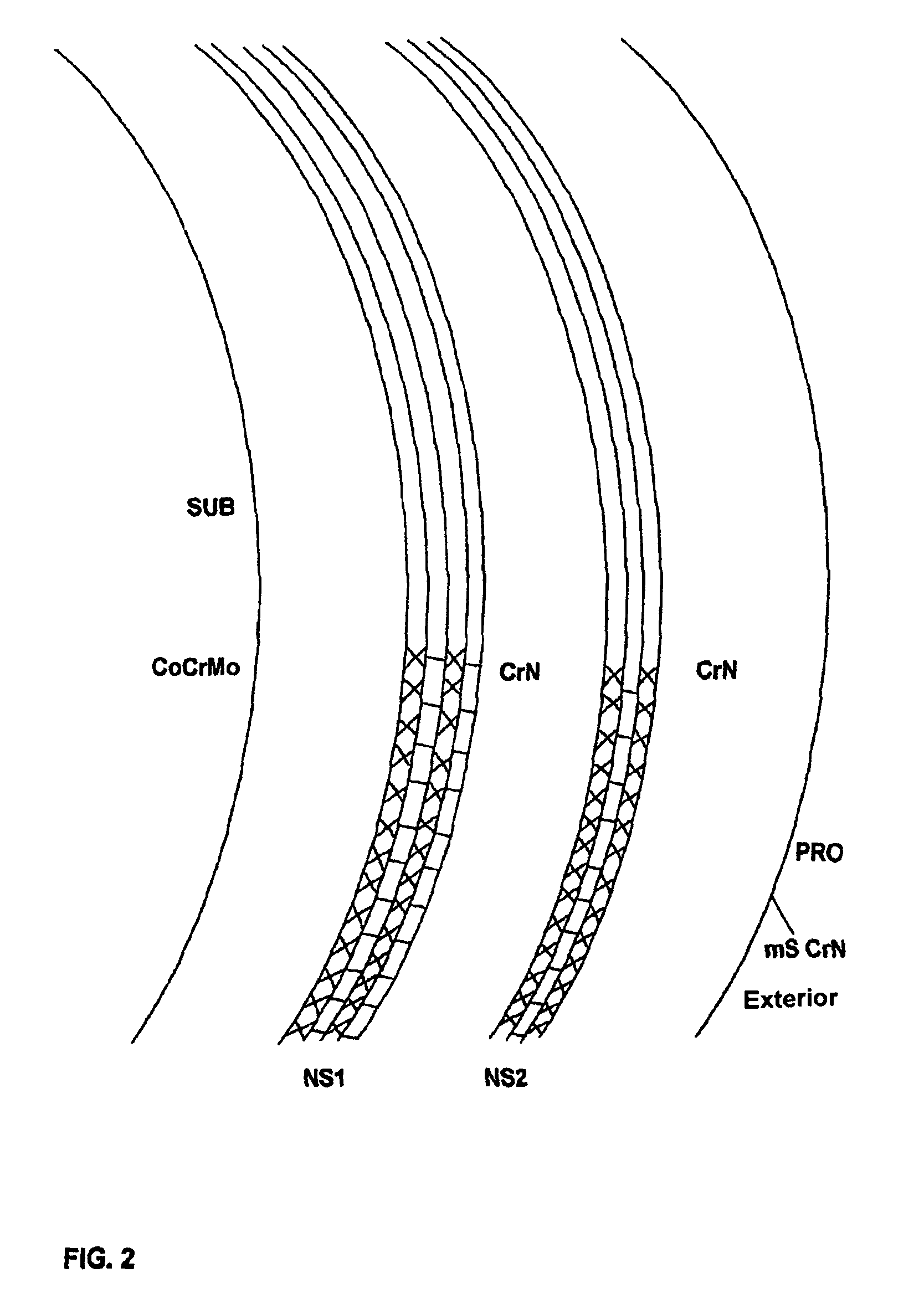Substrate for wear-proof orthopaedic joints, of non ferrous metal with a nitride-based coating
a technology of orthopaedic joints and substrates, applied in the field of orthopaedic implants, can solve the problems of wear debris coming from the tin layer damaging the hip joint, the coating applied on the femoral head against the pe shell has not always been successful, and the use of (tin) coatings in medical devices and orthopaedic applications is quite limited, so as to increase the implant function, reduce friction, and increase the effect of implant function
- Summary
- Abstract
- Description
- Claims
- Application Information
AI Technical Summary
Benefits of technology
Problems solved by technology
Method used
Image
Examples
example 1
Pins and Disc for Tribology Test (Pin-on-Disc) in Bovine Serum
[0057]Pins or needles of 6 mm of diameter and of 15 mm of length, with a half sphere end, of CoCrMo alloy according to ISO 5832-12 regulation (forged with low carbon content) and discs of 30 mm of diameter and 3 mm of thickness were machined and subjected to superficial polishing up to a roughness factor of 0.025 as per ISO 4287 regulation.
[0058]a) A portion of needles and discs was left without coating and called “control”;
[0059]b) another portion of needles and discs was coated with 2.96 micrometers of Superlatex (SL) consisting of 2-nanometer-thick nanolayers of NbN and CrN obtained by vapour deposition (AEPVD), called “Superlatex”. A final superficial polishing was carried out up to a roughness factor below 0.025 micrometers;
[0060]c) needles and discs were coated with 2.1 micrometers of Superlatex consisting of alternate 2-nanometer nanolayers of NbN and CrN, in contact with the substrate and an external 2.5-micromete...
example 2
Implant Prototype: Joints for Hip Resurfacing: Femoral Head and Acetabular Shell Coated with SL / CrN (Forged Substrate of CoCrMo Alloy with Low Carbon Content)
[0065]The example discloses a device for hip resurfacing consisting of:
[0066]1)—a femoral head, the substrate of which is made of CoCrMo alloy according to ISO 5832-12; and
[0067]2)—an acetabular shell made of the same metallic substrate.
[0068]Femoral heads and shells were either left intact and used as reference or coated with SL / CrN having a total thickness of 5.3 micrometers, of which 2.6 micrometers of SL consist of alternate nanolayers (each one 2-nanometer thick) of niobium and chromium nitride, and 2.7 micrometers of CrN; all the layers were deposited by AEPVD technique. A final polishing was also carried out to reduce superficial roughness below 0.025 micrometers.
[0069]Prototypes were then subjected to an acoustic test of “sonication” to evaluate inter-layer adhesion (see Sonication Texts) and to a simulation of the hip ...
example 3
Implant Prototype: Hip Joints Resurfacing: Femoral Head and Acetabular Shell Coated with Superlatex / CrN (CoCrMo Substrate Obtained by Casting with High Carbon)
[0084]This time the same double coating is deposited on an ISO 5832-4 CoCrMo alloy, parameter and test method being equal to those cited in example 2.
[0085]Samples: Coated sample SL / CrN: N pair
[0086]Head (head from high carbon melt-casting) 60347 / 14
[0087]Results of the Tests: reference coating with low carbon forged substrate as per example 2) in comparison with high carbon cast substrate.
[0088]
Coating on LCFCoating on(example 2)HCC (example 3)TestLMV2523 HeadN60347 / 14 HeadWear (mgr)1.52.62.6Metal ions7.9221.6033.6(microg / l Co)Cr53.2073.4011.00Adhesion0.570.73weight loss(mgr)SEMNo delamin.No delamin.
[0089]Conclusions:
[0090]There is no big difference between SL / CrN coating on a substrate obtained by high carbon casting (HCC) and on a low carbon forged substrate (LCF), both coatings are superior to the non coated materials; howe...
PUM
| Property | Measurement | Unit |
|---|---|---|
| thicknesses | aaaaa | aaaaa |
| thicknesses | aaaaa | aaaaa |
| thicknesses | aaaaa | aaaaa |
Abstract
Description
Claims
Application Information
 Login to View More
Login to View More - R&D
- Intellectual Property
- Life Sciences
- Materials
- Tech Scout
- Unparalleled Data Quality
- Higher Quality Content
- 60% Fewer Hallucinations
Browse by: Latest US Patents, China's latest patents, Technical Efficacy Thesaurus, Application Domain, Technology Topic, Popular Technical Reports.
© 2025 PatSnap. All rights reserved.Legal|Privacy policy|Modern Slavery Act Transparency Statement|Sitemap|About US| Contact US: help@patsnap.com



